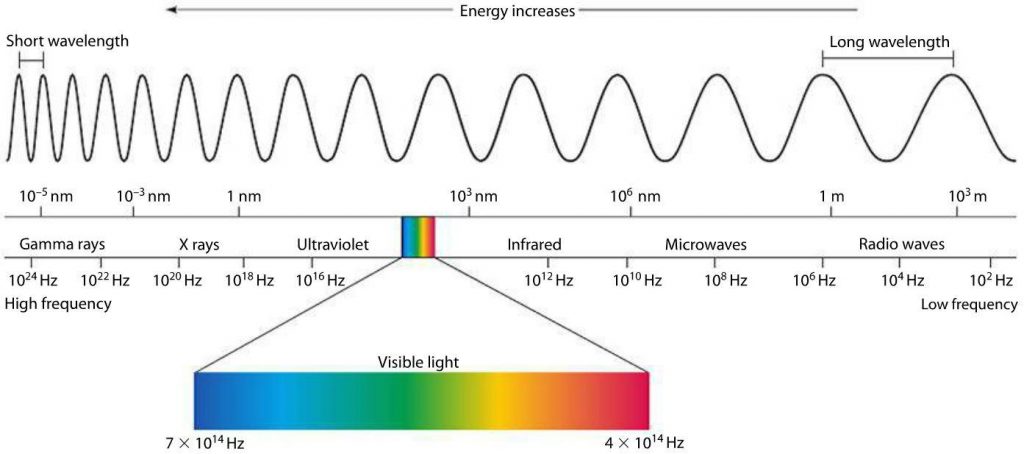The radiation from RF-EMF can cause DNA damage, tissue heating and alter the blood-brain barrier. These are real-world effects, and ARPANSA is actively engaged in discussions with EHS community, medical experts and researchers. ARPANSA will continue to examine research regarding the health effects of EMF radiation.
RF-EMF damages DNA
Exposure to man-made electromagnetic fields (EMFs) can cause DNA damage as well as negative health adverse effects. EMFs can affect the intracellular ionic levels that are essential to ensure the electrochemical balance of cells. This can alter the balance of cell metabolism, resulting in DNA damage. Furthermore exposure to EMFs can cause the production of free radicals and reactive oxygen species (ROS).
Exposure to RF-EMF radiation has been associated with changes in the development of male germ cells. This is due to the transformation of germ cells into spermatozoa, as well functioning maturation as spermatozoa travel through the epididymis. To study the sensitivity of RF-EMF exposure to male germ cell development, a specially-built waveguide device was developed for the exposure of mice that were not restrained to RF-EME in the range of 2.2 W/kg.
In a recent study, researchers have discovered that exposure to RF-EME caused the oxidative DNA damage of spermatozoa. Sperm DNA fragmentation increased by 18% after a week of treatment, and by 23 percent after five weeks. Furthermore, DNA damage in mitochondria was observed by measuring the level of a biomarker, 8-hydroxy-2-deoxyguanosine (8-OH-dG).
Despite this, RF-EMF radiation is not yet classified as a cancer-causing agent. However, several studies have found that exposure to RF-EMF can affect DNA integrity in a variety of cell varieties. In one such study researchers exposed Vero cells to an EMF of 100 Hz for 45 minutes. emf radiation symptoms assessed DNA damage for at 48 hours following exposure to determine if exposure affected DNA integrity.
The RF-EMF effect causes the heating of tissues
Although the effects of RF-EMF are typically believed to have thermal origins, some studies have demonstrated that non-thermal influences are also observed. These effects may account for some of the unresolved observations in the epidemiological study of EMF hypersensitivity. Therefore, it is important to take into account non-thermal effects when conducting an exhaustive review.

The non-thermal effects of RF-EMF may occur at the cell membrane. This is an area of research that has been extensively studied. Particularly, the electrochemical behavior of cell membranes is being studied. Current understanding suggests that energy from RF-EMFs higher than 1 MHz is transferred to tissue via dielectric and ionic dissipation. The theoretical studies have indicated that the energy transfer to the tissue could be as high as 200 kV/m.
The electrical properties of tissues are regulated in the form and quantity of water molecules and ions, and other molecules within the body. This determines how absorbed RF EMR is by different tissues. Organs with greater conductivity are likely to absorb more of the field, and thus cause more of an effect. This is the reason why the amount of tissue heating is not constant between the outside and inside however, it is more prevalent in hot spots. Bone and fatty tissues are less susceptible to heating by RF as compared to other tissues, since they are low in water content.
what is emf radiation of the field's penetration is determined by the frequency and strength of the field. Muscle tissue is more able to absorb field energies than the other tissue, and transforms it into heat more efficiently. Typically the depth of penetration that RFEMF has is measured in millimeters (mm). But, the greater the frequency, the deeper the penetration.
RF-EMF causes blood-brain barrier disruption
Researchers have discovered that RF EMF could disrupt the blood-brain barrier which can alter sleep patterns and neurotransmitter levels. Furthermore the impacts on the effects of EMF affect brain function are linked to neurodegenerative diseases. For example, EMF from mobile phones could affect the electroencephalogram's activity and sleep patterns, in addition to the activity of nitric oxide and xanthin oxidase.
emf radiation at Vienna University have studied the effects of exposure to RF EMF in brain cells. They also looked at the effects of ELF EMFs on the brain system. Though the cellular mechanisms that play a role are not fully known but there is a clear association between ELF-EMF exposure and depletion of myelin. This relationship might account for the electro-hypersensitivity symptoms of electro-hypersensitivity. There are, however, known methods for regenerating myelin in the brain.
Researchers have discovered that exposure to 900 millimeters EMF caused a rise in the permeability of the BBB and also increased the symptoms of neuronal damage in rats. They also observed increased exovasation of albumin to neurons. Furthermore, they discovered that after 30 minutes of exposure to 900 MHz 99mTc-MIBI accelerated its diffusion into the brain. However this effect did not occur when using Evans blue injections.
However, RF-EMF does not have a clear method for disrupting the BBB. Evidence suggests that non-thermal EMF exposure increases erythrocyte membrane permeability. This could affect the BBB and increase the efflux of calcium ions. Furthermore, the presence a 99mTc-MIBI radiotracer within the brain has been associated with an increase in the permeability and permeability of the BBB.
